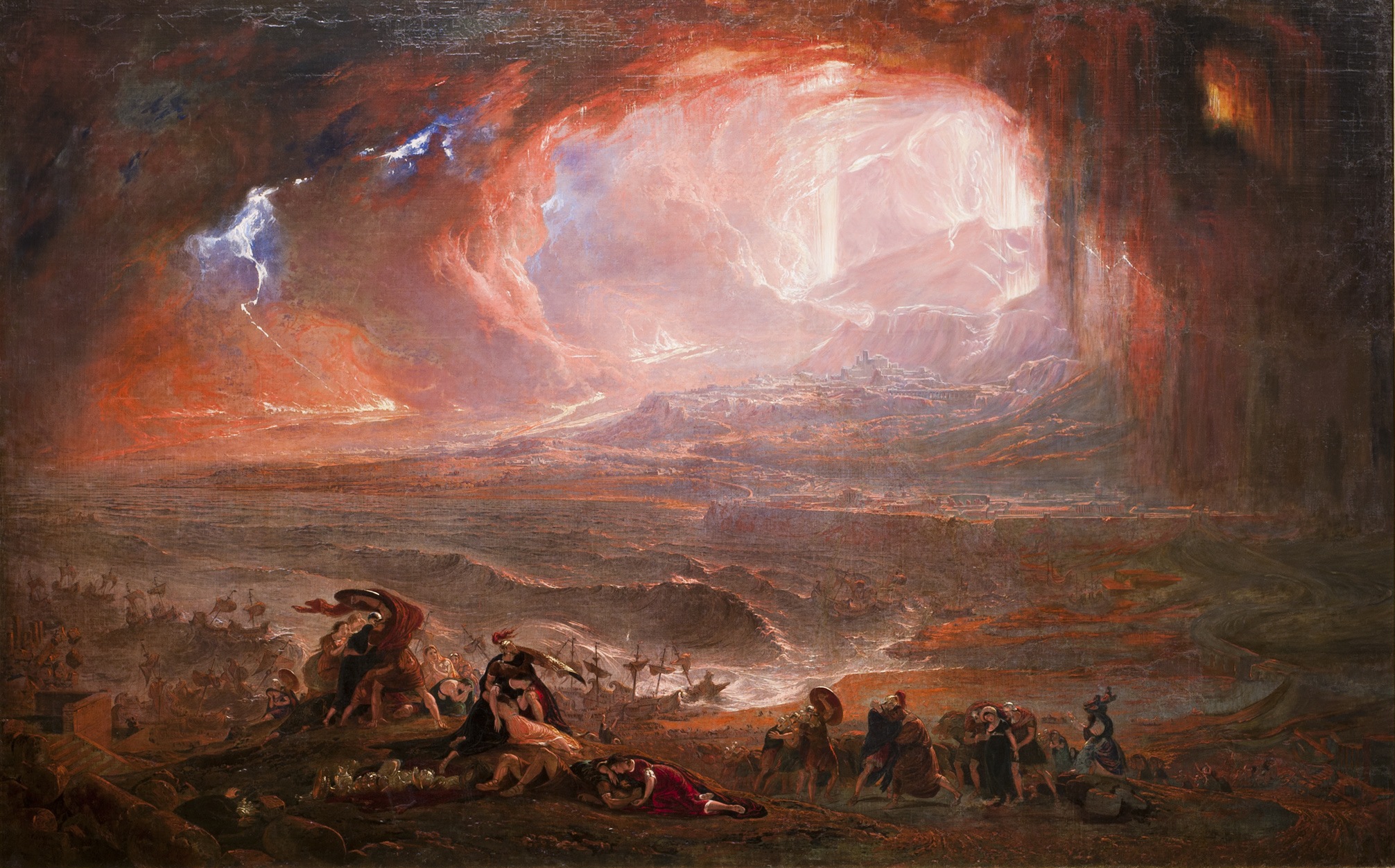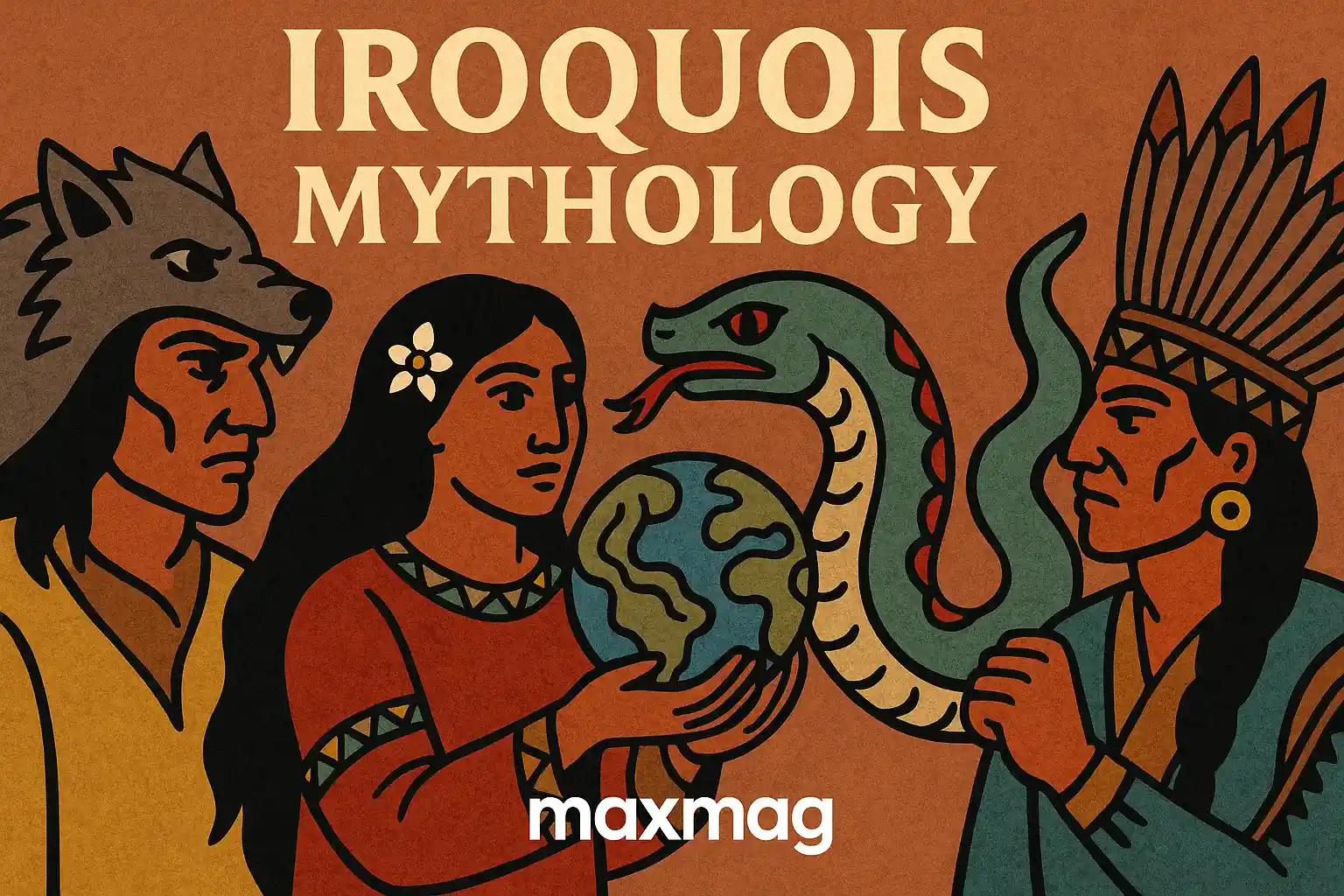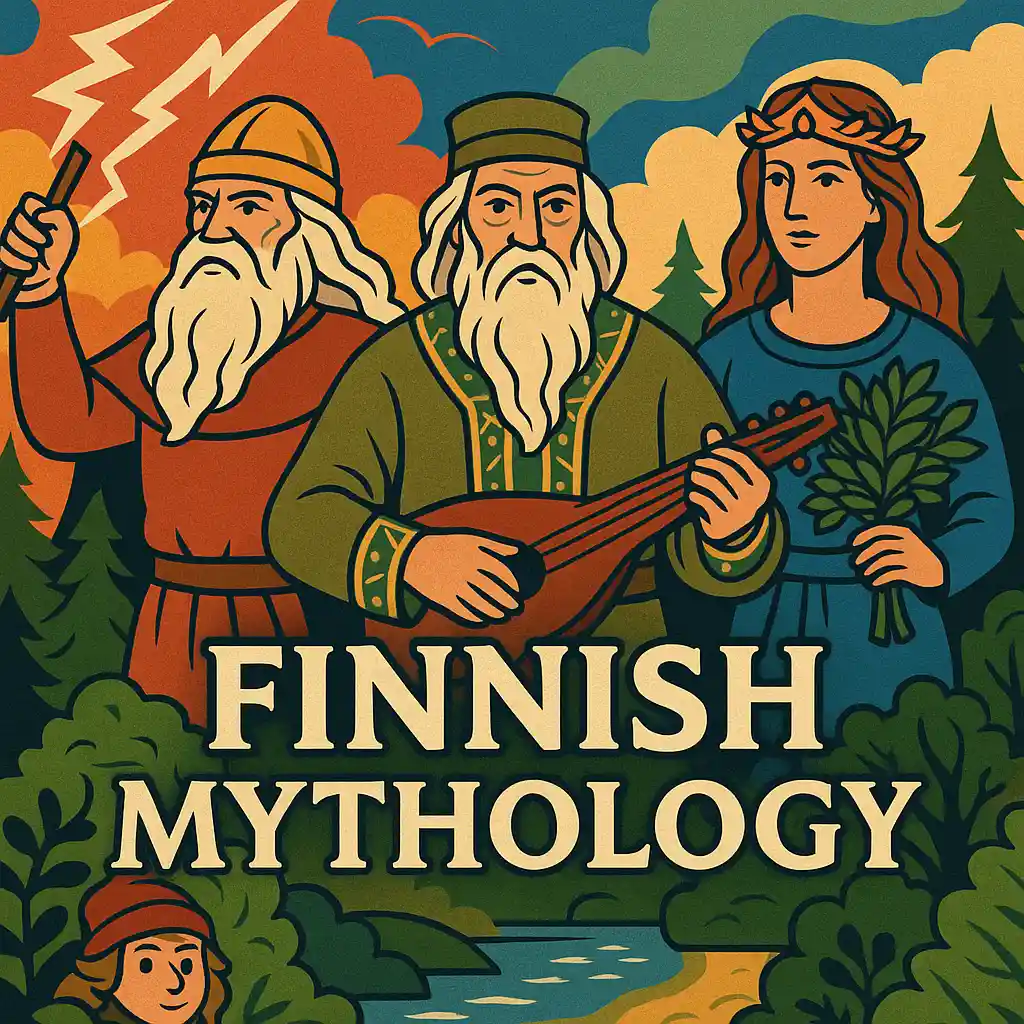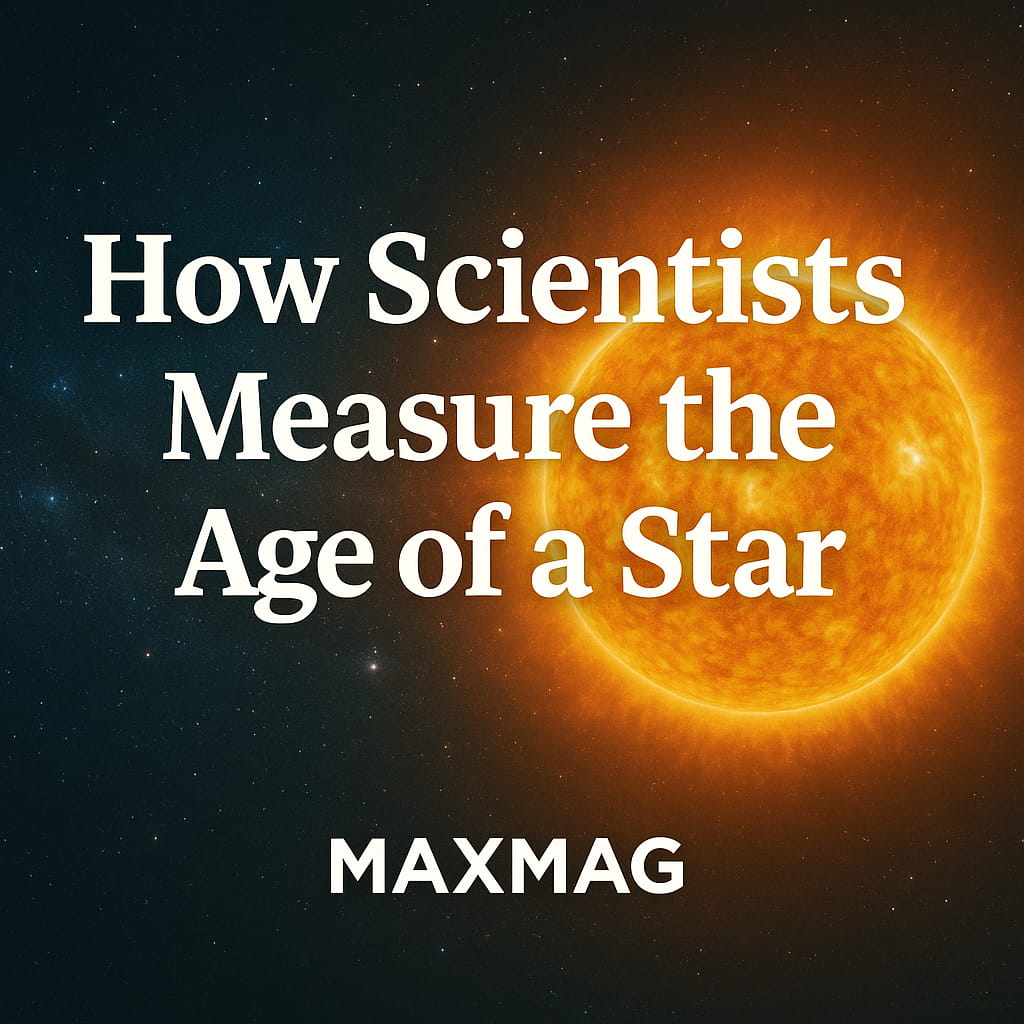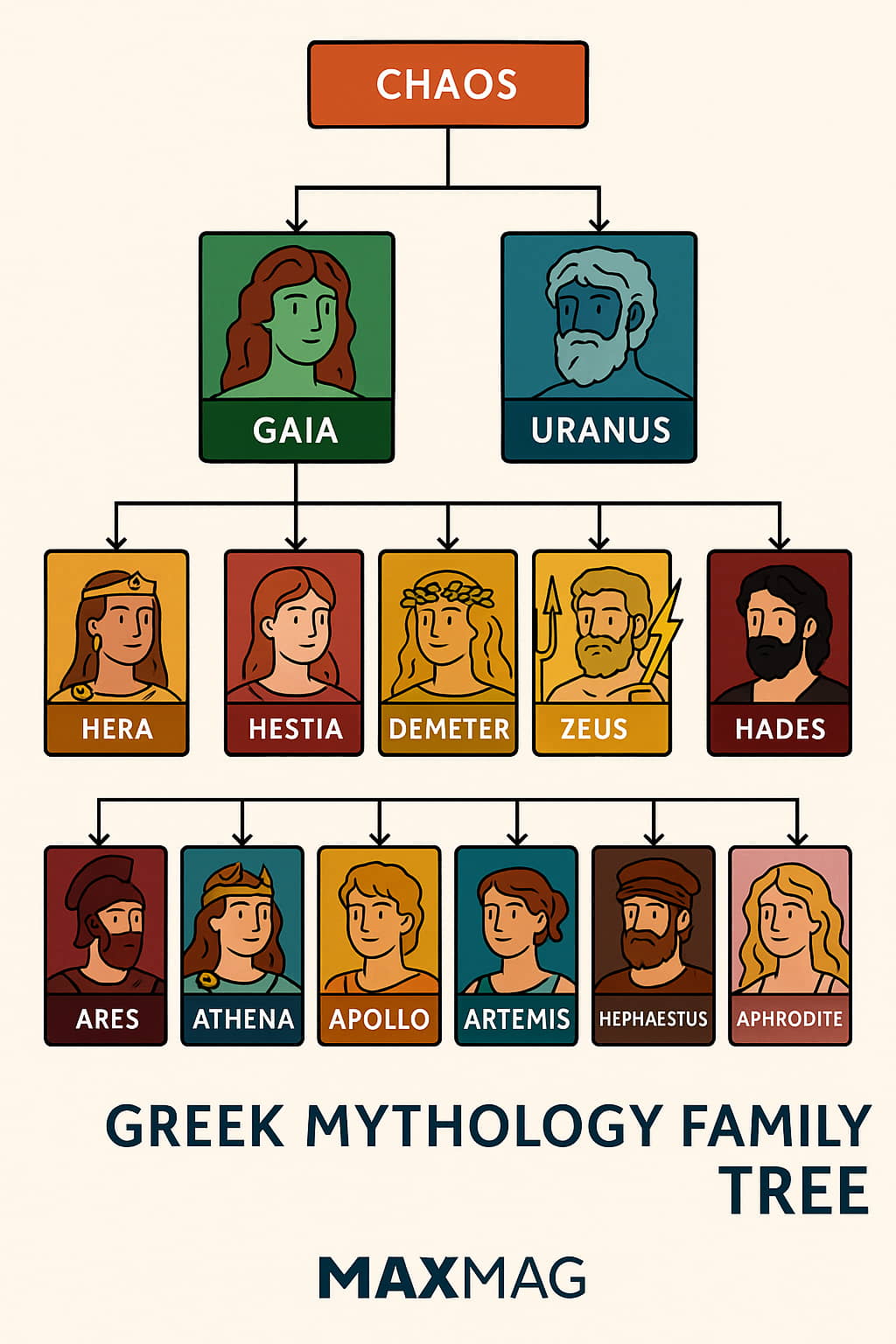
Greek mythology is more than a collection of entertaining stories—it is the spiritual DNA of ancient Greece, a system of beliefs that sought to explain creation, nature, emotion, and even death. At the heart of it all lies the vast and intricate Greek mythology family tree, a sprawling lineage that includes primal deities, powerful Titans, Olympian gods, and demi-gods born of divine-human unions.
Mapping the Greek mythology family tree helps modern audiences trace the evolution of these myths across generations. But it also reflects humanity’s ongoing attempt to make sense of the universe, our origins, and our place in the world. What began in chaos gave way to order, love, revenge, and countless epic battles. This cosmic ancestry isn’t just an ancient tale—it’s a symbolic narrative that continues to influence literature, film, psychology, and even religion to this day.
The Birth of the Universe: Chaos and the Primordial Deities
Everything in Greek mythology starts with Chaos, the shapeless void of nothingness. From Chaos emerged the first generation of primordial beings:
-
Gaia (Earth)
-
Uranus (Sky)
-
Tartarus (the Abyss)
-
Nyx (Night)
-
Eros (Love)
Gaia and Uranus together created the foundation of the Greek mythology family tree. From their union sprang not only the Titans but also the Cyclopes and the Hecatoncheires (giants with a hundred hands). Uranus, however, hated some of his monstrous offspring and imprisoned them deep in Gaia’s womb. Furious, Gaia devised a plan with her son Cronus, the youngest Titan, who castrated his father with a sickle. This act of rebellion set in motion the recurring theme of generational conflict that permeates Greek mythology.
From the blood of Uranus, more entities were born—such as the Furies, the Giants, and the beautiful goddess Aphrodite, who arose from sea foam.
You can explore more on these early myths through the Center for Hellenic Studies by Harvard University, which offers in-depth studies on Greek cosmology.
The Reign of the Titans
With Uranus overthrown, Cronus and his siblings took power. This ushered in the Titan Age, a golden era ruled by this second generation of deities. The principal Titans included:
-
Cronus: Ruler of time and destiny
-
Rhea: Queen of the Titans, mother of the gods
-
Oceanus and Tethys: Titans of the seas
-
Hyperion and Theia: Parents of Helios (Sun), Selene (Moon), and Eos (Dawn)
-
Coeus, Crius, Iapetus, and Mnemosyne: Titans with various cosmic domains
Cronus married Rhea, and they had six children: Hestia, Demeter, Hera, Hades, Poseidon, and Zeus. But a prophecy warned Cronus that one of his children would overthrow him, just as he had done to his own father. To prevent this, Cronus devoured each newborn—until Rhea saved the youngest, Zeus, by hiding him on the island of Crete.
Zeus was raised in secret, nurtured by nymphs and protected by mythical warriors who masked his cries by clashing their shields. When he came of age, Zeus confronted Cronus, forced him to regurgitate his siblings, and initiated the war known as the Titanomachy—a ten-year battle between the Titans and the rising gods.
Zeus’s triumph marked the end of Titan rule and the beginning of the Olympian dynasty. Most of the defeated Titans were cast into Tartarus, imprisoned for eternity.
The British Museum offers engaging educational material about these ancient Greek power struggles and their symbolism.
The Olympians Take Power
At the summit of the Greek mythology family tree sit the Olympian gods—the third divine generation and rulers of the classical Greek world. They took residence on Mount Olympus and governed all aspects of existence: love, war, wisdom, agriculture, and death.
The twelve most commonly cited Olympians include:
-
Zeus: King of the gods, thunder, and law
-
Hera: Queen of the gods, marriage, and family
-
Poseidon: Sea, earthquakes, and horses
-
Demeter: Harvest, fertility, and seasons
-
Athena: Wisdom, warfare, and strategy
-
Apollo: Music, prophecy, healing, and the sun
-
Artemis: Hunt, wilderness, and the moon
-
Ares: War and violence
-
Hephaestus: Blacksmiths, fire, and technology
-
Aphrodite: Love, beauty, and desire
-
Hermes: Messenger, trade, and travelers
-
Dionysus (sometimes replacing Hestia): Wine, pleasure, and theater
Their relationships were often fraught with jealousy, betrayal, and divine politics. Zeus, notorious for his countless affairs, fathered numerous demi-gods and divine figures, while Hera sought revenge on his lovers and their children.
Each Olympian controlled specific domains, and their personalities often mirrored the forces they represented—calm yet volatile, powerful yet capricious.
For a deeper dive into the personalities and symbols of the Olympians, visit Theoi.com, a respected academic resource on Greek myth and cult.
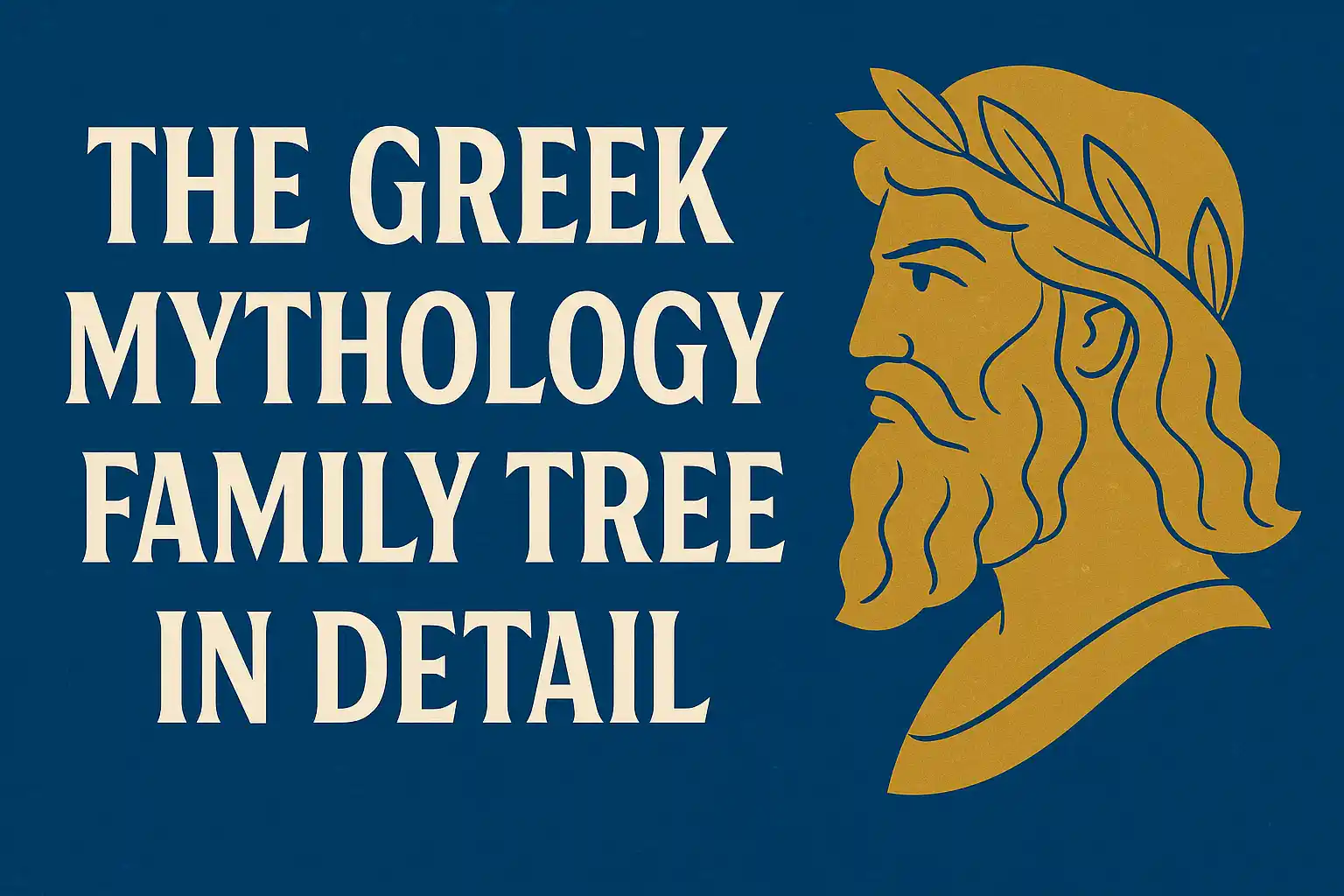
The Greek Mythology Family Tree and Its Symbolism
The Greek mythology family tree is more than an ancestry chart—it is a reflection of how ancient Greeks made sense of the universe, human emotions, and the cycles of nature. Each generation of gods represents a philosophical or psychological evolution.
-
The primordials embody raw, chaotic forces.
-
The Titans symbolize natural order and elemental power.
-
The Olympians represent the structuring of society, intellect, and morality.
Even the cyclical rise and fall of divine rulers mirror human history’s repeating themes—power seized, power challenged, and power transformed.
The psychoanalyst Carl Jung believed these mythic figures represented timeless archetypes. The father-son conflict between Cronus and Zeus, the heroic journey of Heracles, or the doomed love of Orpheus and Eurydice—these stories echo in every culture, every psyche.
Demi-Gods: The Human Connection to Divinity
Perhaps the most emotionally resonant figures in the Greek mythology family tree are the demi-gods—offspring of gods and mortals. These heroes combined divine power with human vulnerability, allowing them to bridge the two worlds.
Heracles (Hercules)
The most famous demi-god, Heracles was born of Zeus and the mortal Alcmene. Known for his strength, courage, and tragic fate, he undertook the Twelve Labors to atone for killing his family in a fit of madness—madness sent by Hera.
Perseus
Another son of Zeus, Perseus rescued Andromeda and slew Medusa, the snake-haired Gorgon. His adventures shaped the heroic ideal for centuries.
Achilles
Son of the sea-nymph Thetis and mortal Peleus, Achilles was nearly invincible, save for his heel. His story in the Iliad paints a vivid portrait of pride, rage, and mortality.
Theseus
Famed for navigating the Labyrinth and defeating the Minotaur, Theseus was both a king and a folk hero.
Orpheus
Gifted with divine musical talent, Orpheus’s descent into the Underworld to retrieve Eurydice showcases the deep emotional power of myth.
These figures weren’t just warriors; they were icons of identity. They faced ethical dilemmas, suffered losses, and sought redemption—making their stories timeless.
To explore the influence of demi-gods in ancient art and sculpture, check out the J. Paul Getty Museum’s mythological collection.
The Greek Mythology Family Tree in Modern Media
The Greek mythology family tree continues to shape our modern imagination. From movies like Clash of the Titans and Wonder Woman to book series like Percy Jackson and video games like Hades or God of War, the divine lineage of gods and heroes is far from forgotten.
Why does it still matter? Because it touches on:
-
Moral dilemmas (Zeus’s infidelity vs. Hera’s wrath)
-
Fate vs. free will (as seen in Oedipus)
-
Courage and redemption (Heracles, Orpheus, Perseus)
-
The search for identity (echoed in modern coming-of-age stories)
In fact, many literary and film archetypes—heroes, mentors, tricksters, wise old men—can trace their origins back to this mythological network.
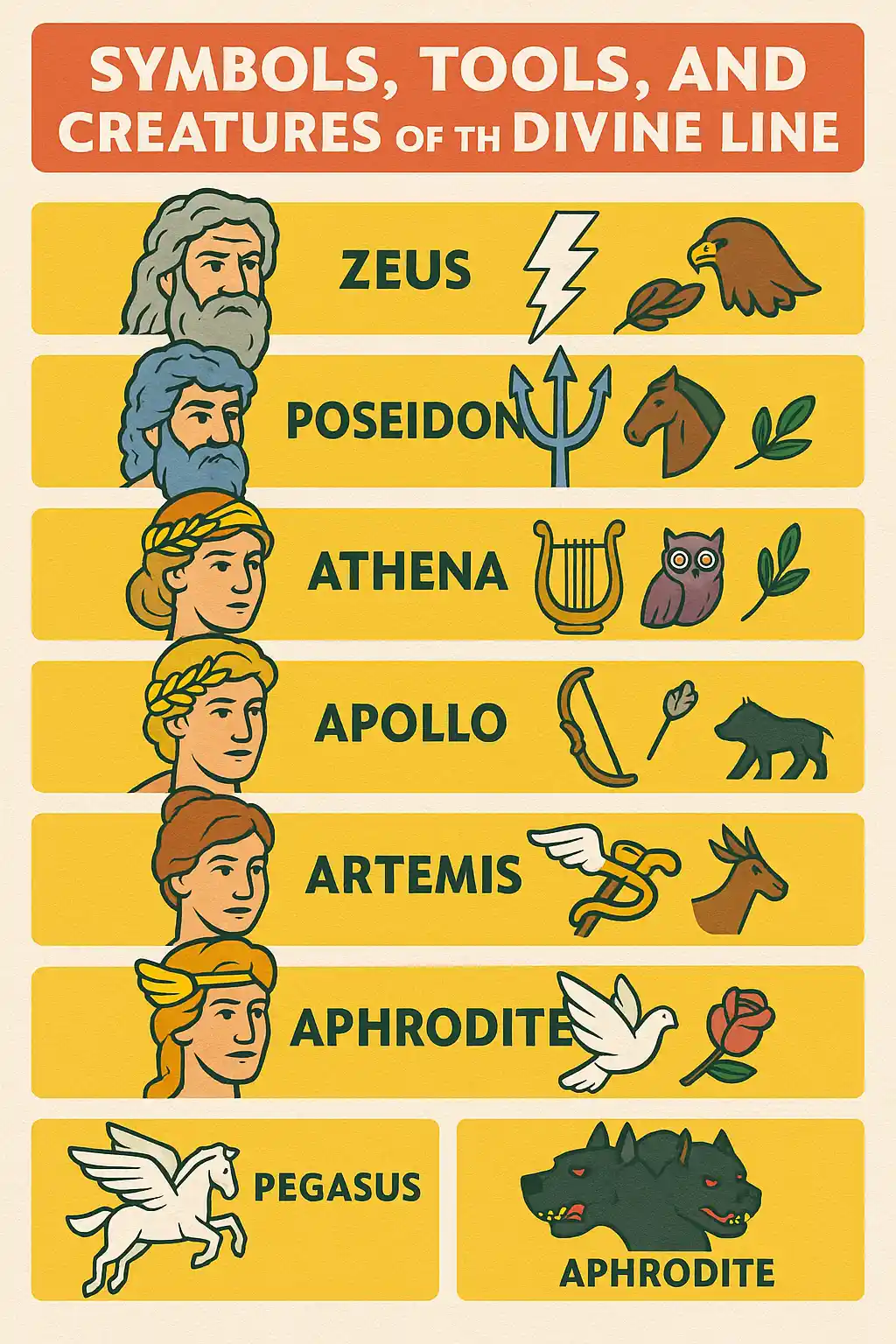
Symbols, Tools, and Creatures of the Divine Line
The Greek mythology family tree also gave rise to iconic symbols and mythical creatures. These visuals helped the ancients understand abstract concepts through concrete imagery:
-
Zeus: Thunderbolt, eagle
-
Poseidon: Trident, horse
-
Athena: Owl, shield (Aegis)
-
Apollo: Lyre, laurel
-
Artemis: Bow, deer
-
Hermes: Winged sandals, caduceus
-
Aphrodite: Dove, rose
Mythical beasts such as Pegasus, Cerberus, Hydra, and Chimera also came from divine unions or as trials faced by heroes.
Many of these symbols still appear in medicine, military insignia, and academic logos today, underscoring their cultural endurance.
Family Conflicts, Prophecies, and Tragedies
The Greek mythology family tree is laced with conflict:
-
Cronus feared Zeus and swallowed his children.
-
Zeus feared prophecy and tried to prevent Athena’s birth.
-
Hera’s jealousy caused tragedy for many demi-gods.
-
Aphrodite’s vanity sparked the Trojan War.
-
Hades abducted Persephone, causing seasonal cycles.
These tales are more than myth—they serve as allegories about hubris, revenge, sacrifice, and love. They reveal how myths offered moral lessons long before philosophy formalized them.
Conclusion: Why It Still Matters
The Greek mythology family tree is more than a chart of divine names. It’s a living story that reveals the beliefs, fears, hopes, and values of an ancient civilization. Through gods and demi-gods, myths answered timeless questions: Who are we? Why do we suffer? What lies beyond death?
Even today, in classrooms, films, psychology, and pop culture, the stories of these divine figures continue to shape how we think and feel. Understanding the mythological family tree gives us insight into the enduring human quest to understand life—and ourselves.

